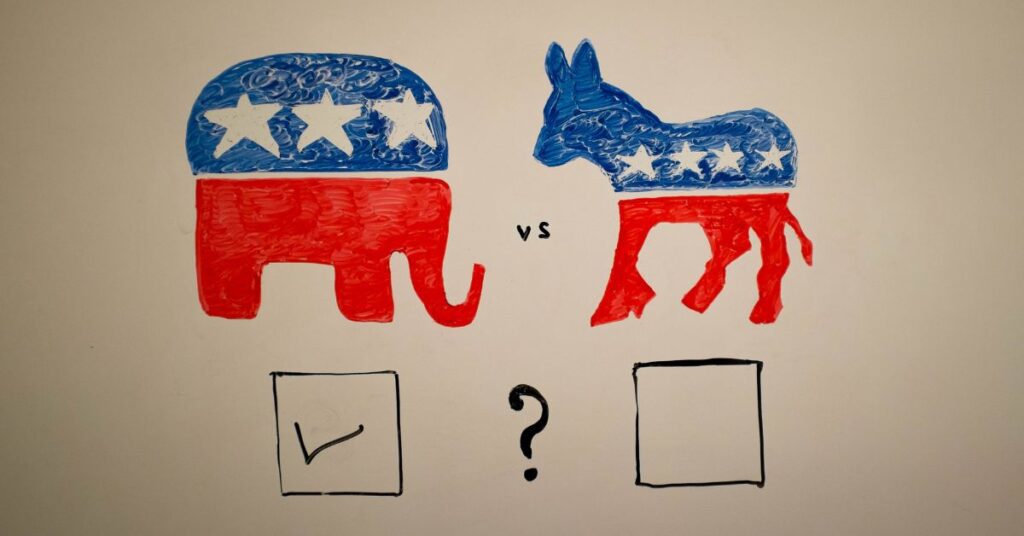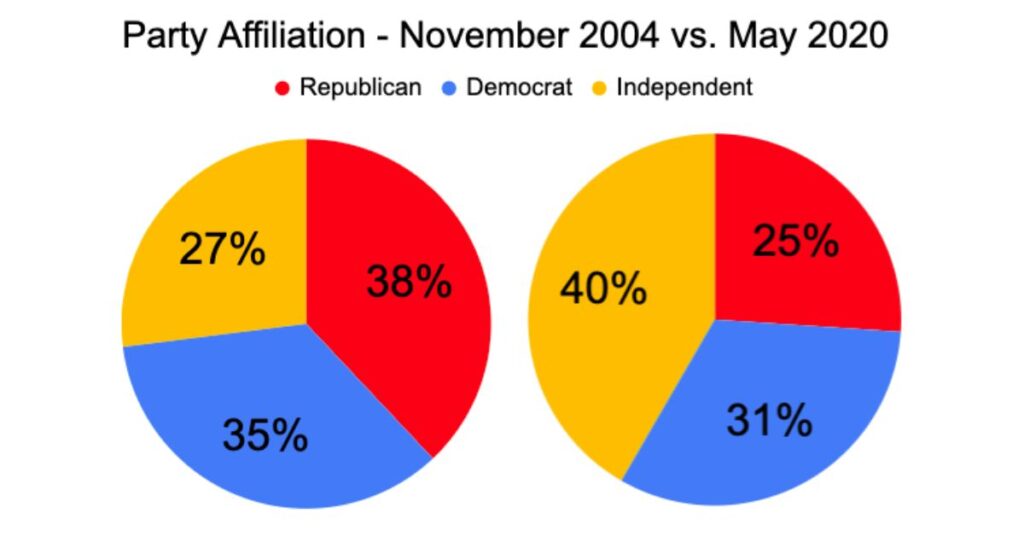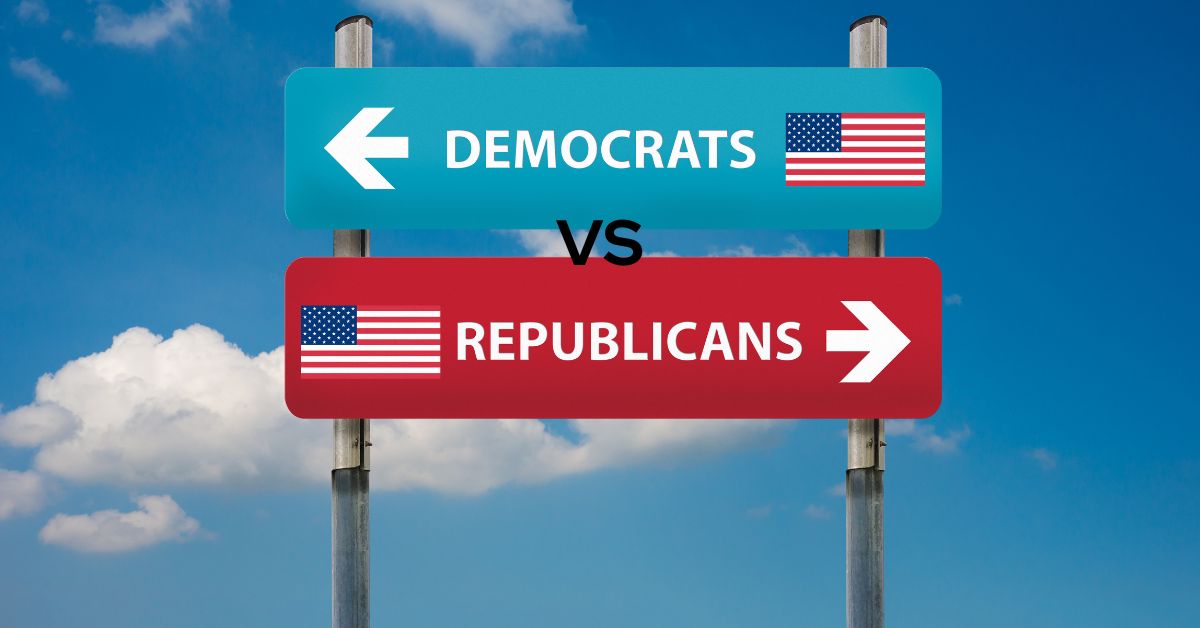Choosing between Democrats and Republicans is not an easy task. Even more, it is the responsibility to make your child understand the difference between the two parties that have played a significant role in the political situation of the United States. Here is a brief overview of the two and a simplified version of the goals, fundamentals, and ideologies of the two parties that will help you explain your kid without difficulty.
Let’s start with the basic knowledge supplement first.
What does the Democrat and Republican party believe?
The Democrats and the Republics are two major political parties in the United States that have impacted its political situation and played a significant role in its overall functioning for over two centuries. The primary difference between the Democrats and the Republics is the leaning of Democrats toward equality and social responsibility, while the Republics focus on individual freedoms, rights, and responsibilities.
The Democrats believe that the government must participate more actively and have a more active role in society. In contrast, the Republicans believe in less government interference for public benefit and safety.
Each party has its own beliefs and political and individual agendas. But both parties have similar opinions and want the best for the people.
Democratic Vs. Republic- A brief overview
Overall Philosophy
The Democrats have a liberal ideology and are left-leaning. Left-leaning is applied to people and groups having a more liberal attitude and supporting progressive reforms, especially concerning social and economic equality. Equal rights, freedom of expression, equal access to public goods and social services, and the absence of legally enforced social class are some of the priorities of the left wing.
On the other hand, the Republics are right-leaning or have more conservative views on politics and the country’s running. Right wings are a section of a political party or system that advocate a free enterprise/ free market without government intervention or intervention by any external authority. They are in favor of socially traditional ideas as well as private ownership.
Economy
Democrats usually support a mixed economy with higher minimum wages, Social Security, universal health care, public education, and subsidized housing that can significantly help low-income households. Additionally, they support progressive taxation( higher taxes on large businesses or high-income families) to help reduce the debt and enable an equal income distribution in the country.
Republics promote tax cuts and deregulation and advocate spending less on welfare to save money. In contrast, to democrats, republics believe in tax cuts to improve the country’s economy. Republicans oppose any economic policies that put the government in control of the economy. In addition to advocating the uplifting of small businesses, they believe in reducing subsidized housing and supporting a simplified tax system for people’s benefit.
Social Issues
Democrats are more liberal than Republics in terms of anti-discrimination laws for protected community groups based on sex, race, ethnicity, sexual orientation, and gender/ gender identity. Additionally, they believe that the government should have an active role in society for equality and to help people have a better quality of life.
Republics have more conservative views and are generally not in support of gay marriage or abortion rights. Their social and community ideas are based on individual rights and justice. Compared to democrats favoring friendly immigration services, republicans advocate for stricter immigration policies. Most importantly, they prefer a smaller government in terms of size and responsibilities.
The anti-discrimination laws and environmental laws backed by democrats are discouraged by republicans because of their consequences on businesses and job opportunities.
Stance on major issues
Gun laws
Democrats favor more gun controls regarding the possession, use, and sale of firearms and ammunition. Republics oppose gun control laws and strongly support the Second Amendment, which supports the right to keep guns and carry concealed weapons for protection and safety.
Death penalty
Death penalty or punishment by death for serious crimes is opposed by Democrats and the party even having proposed the abolition of the Death Penalty because of the risk of convicting an innocent person unknowingly. Republics are comparatively neutral towards the issue, with a small group justifying the death penalty on moral grounds.
Climate change
Democrats recognize that climate change poses severe threats to the health and future of children and the economy and financial system of the country. In addition to building a clean energy economy, they advocate upgrading the water, transport, wastewater, and energy infrastructure to address the climate crisis.
Republics, in contrast, are mostly neutral to climate change and are generally not supportive of climate change policies. In contrast, they favor planting trees to absorb carbon emissions and providing a tax credit to encourage businesses to develop technology to capture and store carbon emissions.
Gay marriage
Democrats favor same-sex marriage and are committed to ending anti-LGBTQ violence, bullying, and discrimination and ensuring that LGBTQ Americans are treated with dignity and respect in schools, workplaces, and communities.
Republicans were previously opposed to gay marriage but are gradually evolving to advocate for the topic. But most of the community is sharply anti-LGBTQ and opposes teaching about sexual orientation and gender identity in classrooms and learning communities.
Abortion rights
Democrats support abortion rights and advocate legalizing elective abortions. Republicans, on the other hand, oppose abortion rights and are not in favor of pro-abortion rights.
How do you explain Democrats vs. Republicans to a child?
There are two ways to explain democrats and republics to your kids. Firstly keeping in mind their academic interests. Secondly, for sentimental reasons to instill a sense of responsibility in their young minds. For simplicity purposes, take one point and expand on it as per their ages. We have tried to use an ice cream story to lay the ground and use it for future references in older kids.
Age 3-5
For children aged 3-5, show them two ice creams – one with cherry toppings for republicans, the other with blueberry toppings for democrats. Alternatively, you can choose red and blue sprinklers for them. But introduce them to the two colors and the names.

Start with the most basic color patterns depicting the two parties, i.e., blue for democrats and red for republicans. You can even teach them about the animals depicting the party symbols.

Apart from the basic colors, show them the basic things like roads, buildings, and notes with portraits of leaders. This will help them form a basic idea about the existence of the parties and stay in their minds for future education.
Age 6-9
The CDC states that children aged 6-9 are curious about their surroundings and show rapid development of their mental skills. Before proceeding with the two parties, keep in mind the points you will discuss with them. We have taken two points of the economy and climate change to be explained through ice creams and their toppings.

Let’s take the example of honey ice cream for this age group. Start serving the ice cream and slowly reach the point of- Honey, its chief flavor. Emphasize the fact that honey comes from bees who need flowers to survive. For bees and flowers, the environment needs to be such that they can thrive and grow. Now get to which party is pro-environment and which is neutral.
To explain the economy, make your kids go through an imaginary scenario where your house is the country, and your kids are the country’s citizens. Now give them two scoops of ice cream, but before that, let them know that as citizens, they will be required to pay taxes for the ice creams- for higher income houses – more taxes from democrats.
Irrespective of houses – everybody has to pay the same tax from republicans.
This will help them understand the two topics better and be a fun experience for added fun.
Besides the ice creams, maps are another fun way to explain to kids.

Take some maps and show them the red and blue areas. Now let them color or put markings on the sites. You can even use jigsaw puzzles of maps and let them align for a fun learning experience.

If your kid is a math nerd, you can use tables and pie charts to explain how they like.
Be careful not to force your beliefs or talk about any negative traits at this age, as it may impact their vulnerable minds and make it difficult to see things from the correct perspective.
Age 10+
Kids of this age are well aware of their surroundings, and you can elucidate a bit more on topics like immigration laws and discrimination. Use the ice cream example to simplify these things in their minds.
E.g., there are two children. Bertha and David. Both love ice cream and are due to receive a scoop. David gets a smaller scoop. Bertha, on the other hand, receives a larger scoop. Now explain the reason for the inequality.
If possible, or if you have a large family, segregate the younger members into two different groups. Let them vote on the decisions about meal times, the clothes required to be worn, and the freedom given to them for screen times and playtimes. This will provide them with a first-hand idea of the government they are in favor of and the positives and negatives of its ideologies.
The curious ones can find out more from libraries and documentaries. The change in global politics, news, social media platforms, and awareness podiums will help them understand the detailed aims and internal conflict associated with the parties.
Are there some simple analogies that a child can understand?
A few simple analogies that will make it easy to explain your kids are
- Allow the child to use a certain amount of pocket money regularly. Entrust some expenses with that money and compare it with the ruling governments’ and opposition parties’ tax and fiscal policies. It will help in better understanding of the governments and will also instill a sense of financial responsibility.
- Take a whole pizza with varied toppings and make your kids sit down around it. Cut it into different sizes and, in turn, divide the sizes into larger and smaller bites. The sizes represent the topics of government interference, tax policies, anti-discrimination laws, and environmental laws. The bites represent the stance of each party on the issues.
Alternatively, take a pizza with a wide variety of toppings in mushrooms, pineapples, olives, sausages, and jalapenos. Mushrooms for government interference, olives for the economy, pineapple for environmental changes, and jalapenos for stances on significant issues. Now give them a slice and ask them to represent a party. Add or remove toppings based on the party policies and their take on important topics.
- Take a ladder and make your little one climb it. Compare each step to the progress of the party and the milestones achieved by them. It will stay etched in their minds for life and make them interested in history.
How do you prepare for the conversation?
As discussed earlier, you may need to prepare for the conversation to help your child with their school assignments or feel the need to talk to them about the topic as a responsible parent/ guardian. Telling them stories about the leaders of the concerned parties, showing them pictures, and reading to them about them can make it easy to get started on the topic.
Dinner tables are another important area for initiating the conversation. Children are precocious by nature and often repeat things that they have overheard. Have a healthy dinner table conversation and encourage them to speak their mind on their stance about republics and democrats. Gently correct any misinformation or add relevant information without being assertive on the topic.
Reference:
- www.britannica.com/topic/Democratic-Party
- 7esl.com/democrats-vs-republicans/
- www.republicanviews.org/republican-views-on-the-economy/
- democrats.org/where-we-stand/party-platform/combating-the-climate-crisis-and-pursuing-environmental-justice/
- www.pewresearch.org/fact-tank/2021/07/23/on-climate-change-republicans-are-open-to-some-policy-approaches-even-as-they-assign-the-issue-low-priority/







